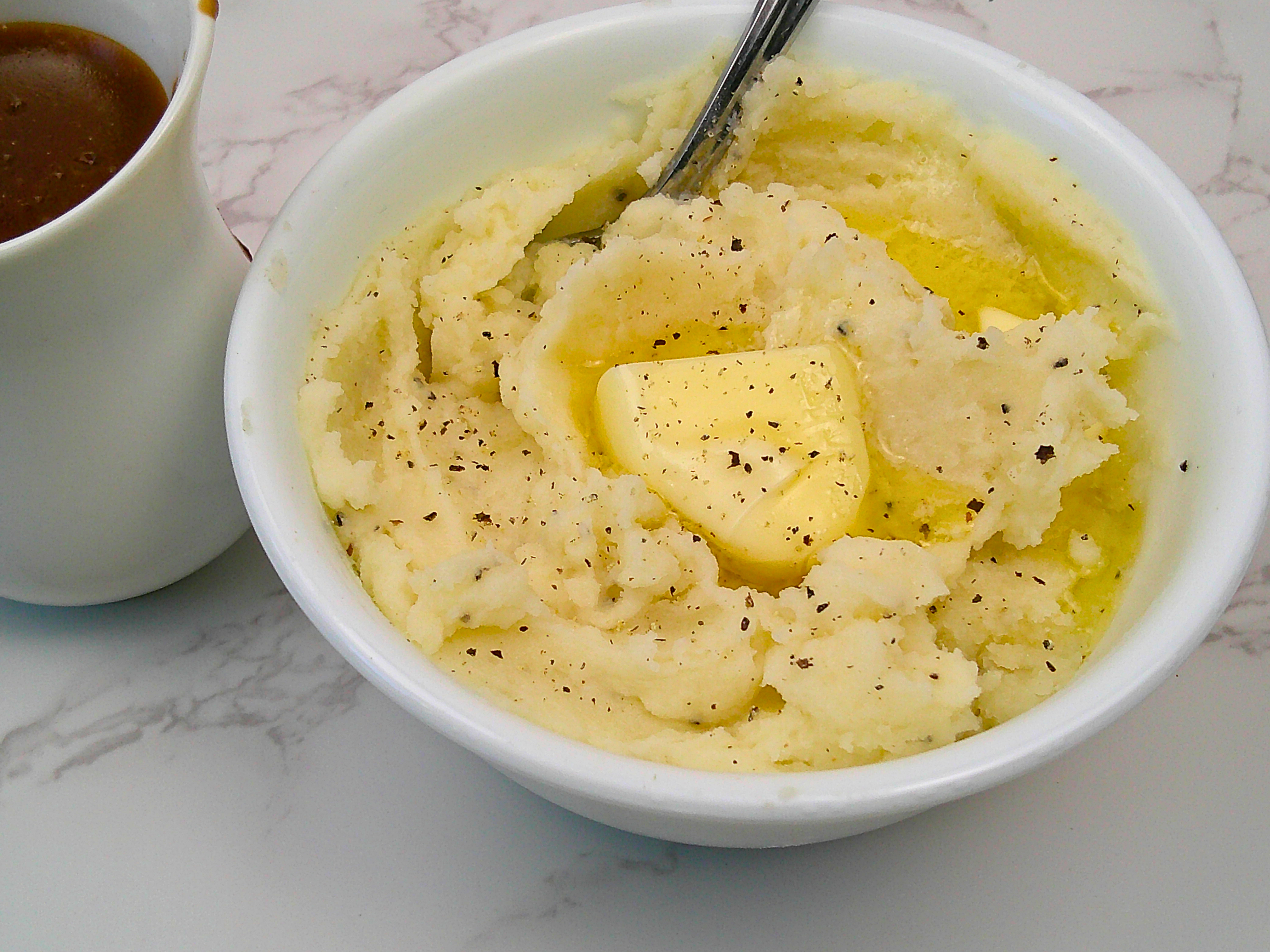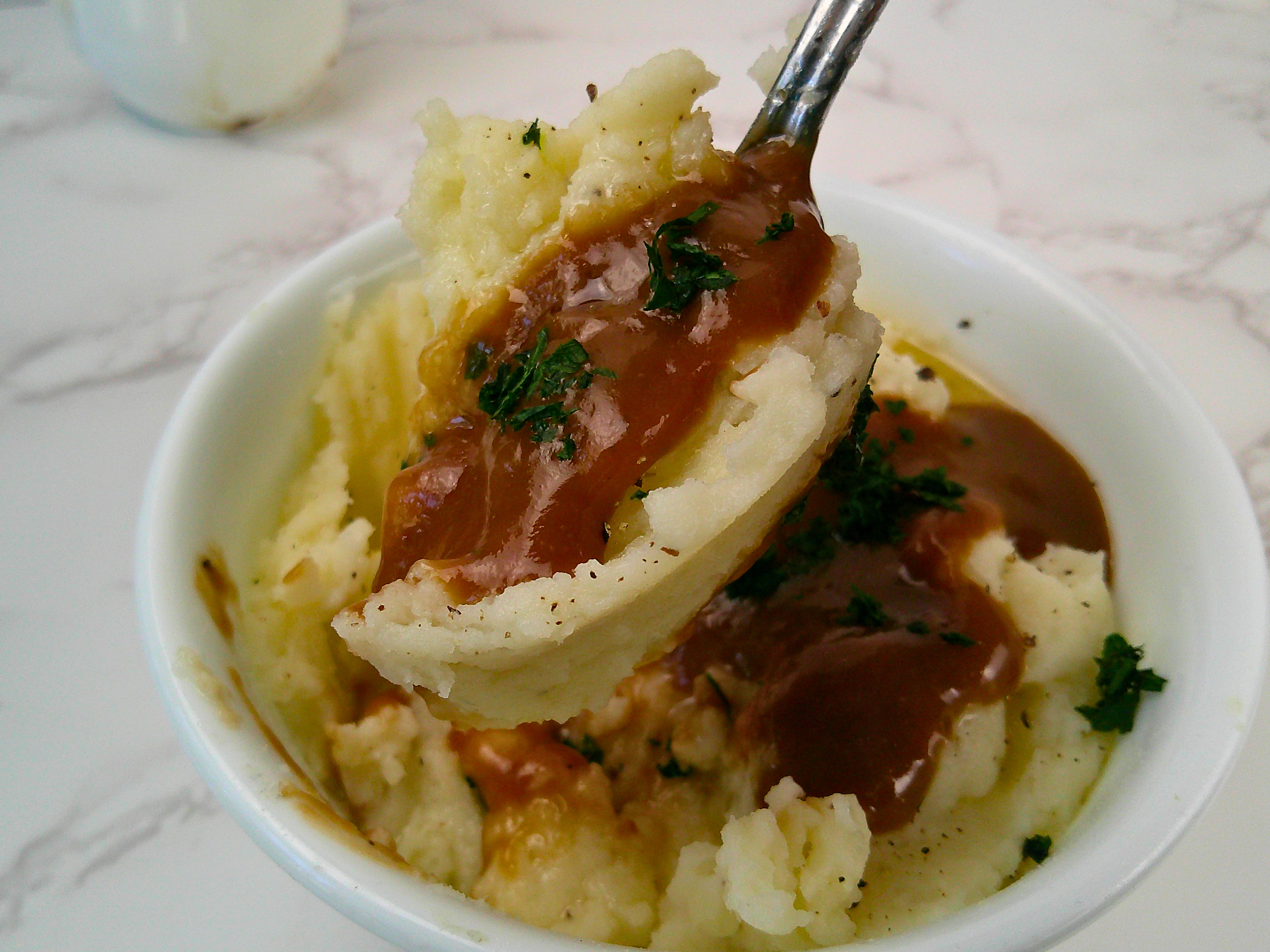The Best Creamy Mashed Potatoes Recipe for Any Occasion

Let’s face it—mashed potatoes are the ultimate comfort food. Whether it’s Thanksgiving, a casual weeknight dinner, or a holiday feast, a big bowl of fluffy, buttery mashed potatoes is always welcome at the table. While it may seem like a basic side dish, mastering the perfect mashed potatoes can make or break a meal.
In this post, I’ll cover everything you need to know about making the best mashed potatoes from scratch. I’ll go through the ingredients, techniques, and some helpful tips to ensure your potatoes turn out creamy, smooth, and full of flavor. So, whether you’re making mashed potatoes for the first time or you’re a seasoned pro looking to elevate your game, this guide has you covered.
Why You’ll Love This Mashed Potatoes Recipe
– Simple Ingredients: This recipe uses basic ingredients like potatoes, butter, and milk, but delivers incredible flavor and texture.
– Easy to Make: No complicated steps here—just boil, mash, and stir your way to perfect mashed potatoes in no time.
– Customizable: You can easily adjust the flavor with different add-ins like garlic, cheese, or herbs.
– Perfect for Any Meal: Mashed potatoes go with everything—from roasted meats and gravy to vegetables and stews.
The Ingredients You’ll Need
Making mashed potatoes requires just a few simple ingredients, but the quality of each one is key to achieving that perfect creamy consistency. Here’s what you’ll need:
– Potatoes (2 pounds): The best potatoes for mashed potatoes are starchy varieties like Russet or Yukon Gold. Russets create light and fluffy mashed potatoes, while Yukon Golds are creamier and richer.
– Butter (6 Tbsp): Butter adds richness and flavor. Use unsalted butter so you can control the saltiness of the final dish.
– Milk (½ cup): Whole milk works best for creamy mashed potatoes, but you can use heavy cream for extra indulgence, or half-and-half for a balance between richness and lightness.
– Salt (1 tsp): Salt enhances the flavor of the potatoes. Don’t be shy with it, as potatoes can handle a lot of seasoning.
– Pepper (to taste): Freshly ground black pepper adds a nice bit of warmth and spice to the dish. You can adjust this to your liking.
Step-by-Step Guide to Making Perfect Mashed Potatoes
Step 1: Choose and Prepare the Potatoes
Start by selecting your potatoes. As mentioned, Russets or Yukon Golds are your best options. Russets will give you light, fluffy mashed potatoes, while Yukon Golds offer a slightly more buttery and creamy texture.
Once you’ve selected your potatoes, peel them and cut them into evenly sized chunks (about 2 inches in size). This helps them cook evenly and reduces the risk of them becoming waterlogged.
Step 2: Boil the Potatoes
Place the potato chunks in a large pot and cover them with cold water. It’s important to start with cold water so the potatoes cook evenly from the inside out. Add about a teaspoon of salt to the water, which helps season the potatoes as they cook.
Bring the water to a boil over medium-high heat, then reduce the heat to medium and let the potatoes simmer for about 15-20 minutes. The potatoes are done when they are fork-tender—meaning you can easily pierce them with a fork without resistance.
Pro Tip: Avoid overcooking the potatoes, as they can absorb too much water, making your mashed potatoes watery instead of creamy.
Step 3: Drain and Steam Dry
Once the potatoes are tender, drain them well in a colander. Let them sit in the colander for a minute or two to allow any excess moisture to evaporate. This step is crucial for preventing watery mashed potatoes.
For extra dry and fluffy potatoes, you can return the drained potatoes to the hot pot and let them sit over low heat for another minute. This helps steam off any remaining water.
Step 4: Mash the Potatoes
Now comes the fun part—mashing the potatoes! You can use a potato masher for a more rustic texture or a potato ricer for ultra-smooth mashed potatoes. Avoid using a food processor or blender, as these can overwork the starch in the potatoes and make them gluey.
Add the butter to the hot potatoes first and mash until the butter is fully melted and incorporated. This ensures the potatoes absorb the fat, which helps create a smooth and creamy texture.
Step 5: Add Milk and Seasonings
Warm the milk in a small saucepan or microwave before adding it to the mashed potatoes. Cold milk can cool down the potatoes too quickly and make them less creamy.
Gradually pour the warm milk into the mashed potatoes, stirring gently until you reach your desired consistency. You may not need the full ½ cup of milk, depending on how creamy or stiff you like your mashed potatoes. Season with salt and freshly ground black pepper to taste.
Step 6: Serve and Enjoy
Transfer your mashed potatoes to a serving dish and add a few extra pats of butter on top for presentation. You can also garnish with chopped parsley or chives for a pop of color and flavor. Serve immediately while they’re warm and fluffy.
Tips for the Best Mashed Potatoes
– Use Starchy Potatoes: Russet and Yukon Gold potatoes are ideal because their high starch content results in smooth, fluffy mashed potatoes.
– Don’t Overwork the Potatoes: Overmixing releases too much starch, resulting in gummy potatoes. Be gentle when mashing and stirring.
– Add Butter First: Adding butter before the milk helps coat the starch in fat, resulting in a silkier texture.
– Warm the Milk: Adding warm milk helps keep the potatoes smooth and creamy. Cold milk can cause them to stiffen up.
– Taste as You Go: Season with salt and pepper gradually, tasting as you go to ensure your mashed potatoes are perfectly seasoned.
Mashed Potato Variations
Mashed potatoes are incredibly versatile and can be customized to suit your taste or the meal you’re serving. Here are a few fun variations to try:
– Garlic Mashed Potatoes: Roast a whole head of garlic and mash the softened cloves into the potatoes for a sweet, nutty flavor. Alternatively, you can simmer garlic cloves with the potatoes and mash them in.
– Cheesy Mashed Potatoes: Stir in 1 cup of shredded cheddar, Parmesan, or Gouda cheese for rich, cheesy mashed potatoes.
– Herb Mashed Potatoes: Add fresh herbs like parsley, chives, or thyme to the potatoes for a fresh, fragrant twist.
– Sour Cream and Chive: Stir in ½ cup of sour cream and a handful of chopped chives for tangy, creamy mashed potatoes with a hint of onion flavor.
– Bacon Mashed Potatoes: Crisp up some bacon, crumble it, and stir it into the mashed potatoes for a smoky, salty addition.
What to Serve with Mashed Potatoes
Mashed potatoes are a classic side dish that pairs well with just about anything. Here are some ideas for what to serve alongside them:
– Roast Chicken or Turkey: Mashed potatoes and gravy are the perfect accompaniment to a roasted bird.
– Beef Stew: Serve mashed potatoes with a rich, hearty beef stew for a comforting, filling meal.
– Grilled or Roasted Vegetables: Balance the richness of mashed potatoes with the lightness of grilled or roasted veggies like carrots, green beans, or Brussels sprouts.
– Meatloaf: Mashed potatoes are the ultimate side for a classic meatloaf, along with some gravy.
– Pork Chops: The mild flavor of mashed potatoes complements the savory, juicy flavors of pork chops.
How to Store and Reheat Mashed Potatoes
If you have leftovers (or if you want to make mashed potatoes ahead of time), here’s how to store and reheat them:
– Storage: Place leftover mashed potatoes in an airtight container and refrigerate for up to 3 days. For longer storage, you can freeze mashed potatoes in a freezer-safe bag or container for up to 2 months. Just make sure to thaw them in the fridge overnight before reheating.
– Reheating: To reheat, place the mashed potatoes in a pot over low heat and stir in a little milk or butter to loosen them up. You can also reheat them in the microwave, stirring every 30 seconds to ensure they heat evenly.
Common Questions About Mashed Potatoes
What are the best potatoes for mashed potatoes?
The best potatoes for mashed potatoes are starchy varieties like Russet and Yukon Gold. Russets make fluffy, light mashed potatoes, while Yukon Golds are naturally creamy.
Can I use cream instead of milk?
Yes! Heavy cream will make the mashed potatoes even richer and more decadent. If you want a balance between richness and lightness, half-and-half is a great option.
Why are my mashed potatoes gummy?
Gummy mashed potatoes are often the result of overmixing, which causes the potatoes to release too much starch. To avoid this, mash gently and avoid using a blender or food processor.
How do I fix dry mashed potatoes?
If your mashed potatoes are too dry, simply add more warm milk or butter until they reach your desired consistency.
Final Thoughts
Whether you’re preparing a holiday feast or a simple family dinner, these creamy mashed potatoes are sure to be a hit. The simplicity of this recipe makes it easy to whip up any time, and with a few minor tweaks, you can customize them to fit your meal perfectly. Enjoy the rich, buttery flavor and the fluffy texture that makes mashed potatoes the ultimate comfort food!

Creamy Mashed Potatoes Recipe
Ingredients
- 2 lbs Russet or Yukon Gold Potatoes peel and cut into chunks
- 6 Tbsp Butter Unsalted
- 1/2 Cup Whole Milk Warmed
- 1 tsp Salt
- 1/2 tsp Black Pepper
- 1 tsp Garlic Powder
- 1 tsp Onion Powder
Instructions
- Peel and chop potatoes into evenly sized chunks.
- Place the potatoes in a large pot, cover with cold water, and add 1 teaspoon of salt.
- Bring the water to a boil and cook the potatoes for 15-20 minutes, or until fork-tender.
- Drain the potatoes and return them to the hot pot to dry for 1 minute.
- Mash the potatoes with a potato masher or mixer.
- Add the butter and mash until melted and incorporated.
- Gradually stir in the warm milk, adding more or less to reach your desired consistency.
- Season with salt, pepper, garlic powder, and onion powder.
- Serve immediately with extra butter on top if desired.
You know, I never though about warming the milk up. I’ll try it next time!
Great recipe!
This mashed potato recipe looks delicious, I will be making this at home.
Great recipe! I love all of the tips included. I didn’t know adding the butter first would make a difference, thank you!!